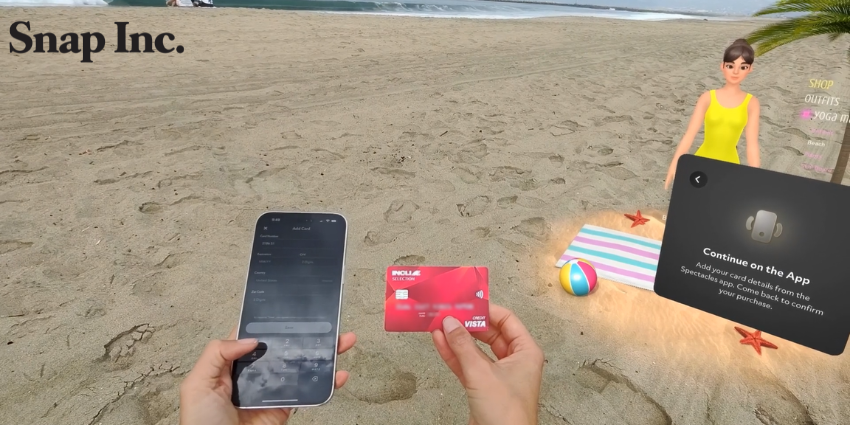This week, following a surge in interest in AR smart glasses, the International Data Corporation (IDC) detailed a “strong rebound” in headset purchases in its Worldwide Quarterly Augmented and Virtual Reality Headset Tracker.
Ramon T. Llamas, Research Director with IDC’s AR/VR team, noted that “the worldwide AR/VR headset market is reaching a critical tipping point.”
The report found that during the latest quarter, the AR/VR headset market grew 18.1% year over year, with Meta leading the rebound by capturing 50.8% of the market.
Llamas added:
Pure VR was once the darling of the market with companies like Meta, HTC, and Sony accounting for the vast majority of volumes. Now we have it on track to wind down in the next few years. Likewise, pure AR had strong promise with the help of Microsoft, but now we anticipate volumes to hold a small place in the overall market.
XREAL is the second-leading market player, in part due to its smart glasses sales. Meanwhile, Viture, a smart glasses vendor, experienced 268.4% year-over-year growth, and TCL achieved 91.6%.
Interestingly, the IDC noted that Apple was absent from the market’s top rankings this quarter, with the reporting firm noting a shift towards optical-see-through glasses.
Jitesh Ubrani, research manager for IDC’s Worldwide Mobile Device Trackers, also added:
The market is clearly shifting toward more immersive and versatile experiences. While Meta continues to lead, the rise of brands like Viture and XREAL shows that innovation in form factor and user experience is resonating with consumers. The next wave of growth will be driven by mixed and extended reality, especially as AI and Android XR platforms mature.
IDC notes that despite a projected 12% decline in AR/VR/MR device shipments in 2025 due to “delayed product launches,” the reporting firm expects a 2026 of roughyl growth of 87% – from 2025 to 2029, the market is projected to grow at a compound annual growth rate of 38.6% the IDC notes.
Llamas concluded:
Meanwhile, we anticipate MR to experience a strong reception with many of those VR companies pivoting there and gaining entrants like Apple. ER headsets will continue to gain traction primarily among gamers. Not to be overlooked is the impact that Google’s Android XR can have across both MR and ER, and we look forward to seeing more vendors leverage the new platform in much the same way that numerous smartphone vendors embraced Android.
More on AndriodXR and Apple Vision Pro
The news follows Google I/O, where the company announced several new products, including its Gemini AI framework expansions. This expansion is supported by Google’s AndroidXR initiative, which collaborates with key XR industry players to develop mixed reality and augmented reality devices that integrate immersive technologies and AI.
“That’s exactly why we’re building Android XR,” remarked Shahram Izadi, the leader of Google’s AndroidXR development team, during the event, who also said:
From headsets to glasses and everything in between. We believe there’s not a one size fits all for XR and you’ll use different devices throughout your day. For example, for watching movies, playing games, or getting work done, you’ll want an immersive headset. But when you’re on the go, you’ll want lightweight glasses that can give you timely information without reaching for your phone.
Izadi discussed how the Android XR team collaborates with Samsung and Qualcomm to develop new Gemini AI use cases for emerging XR devices, including the highly anticipated Moohan headset, which Izadi called “the first Android XR device.”
At WWDC, Apple showcased an updated framework for its Vision Pro mixed reality headset, introducing visionOS 26. This framework aims to enhance the device with new spatial computing capabilities and AI integrations.
Since its initial announcement last year, the Vision Pro has primarily been marketed as a productivity tool, and the new operating system will introduce additional business features.
VisionOS 26 will facilitate new ways to engage with workplace tools, such as Spatial Analogue, utilising the Logitech Muse and Dassault Systèmes’ 3DLive app. This allows users to visualise 3D designs in person and with remote colleagues.
Mike Rockwell, Apple’s vice president of the Vision Products Group, said at the time:
With brand-new ways for Vision Pro owners to connect, explore, work together, and enjoy content, we’re incredibly excited for users to enjoy features like apps and widgets that they can arrange in their spaces, spatial scenes that offer a brand-new viewing experience for their photos, and dramatically enhanced Personas on Vision Pro.
The XR market is maturing, albeit in a repetitive, slow-moving pace, which promises paradigm-shifting technology in the coming years. While broad adoption and utilisation will continue to take time, upcoming events like Meta Connect will likely prove to be grounds for resating long-term visions of XR innovation.







